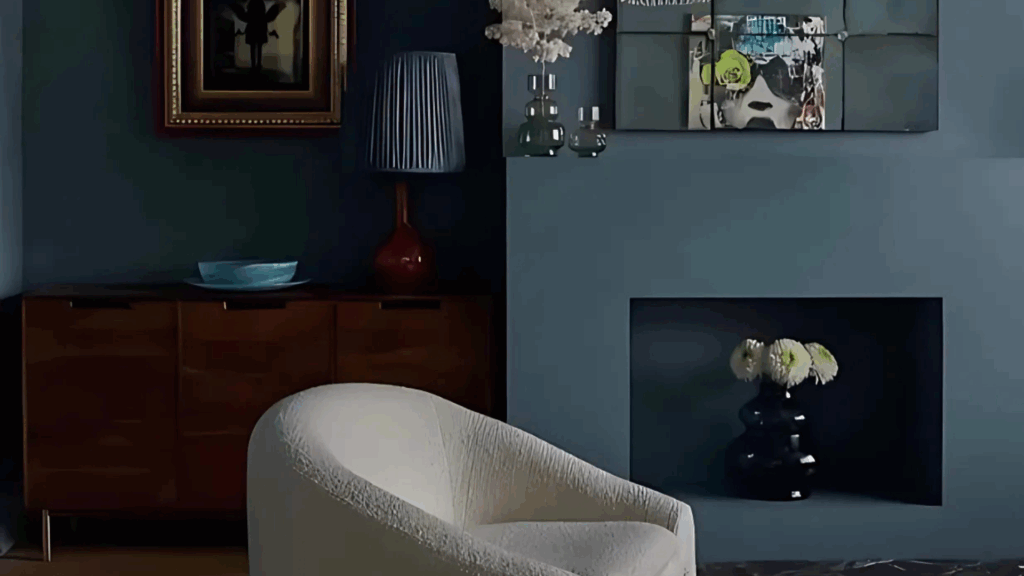I’ve been there, trying to find the perfect gray that’s neither too cool nor too warm. I finally settled on Benjamin Moore’s Templeton Gray (HC-161). After living with it in my own home, I can share everything I’ve learned.
In this article, you’ll find:
- What Templeton Gray really looks like (not just in fancy photos)
- Which rooms work best with this color
- Colors that match perfectly with it
- How to test it before spending money
Having used Templeton Gray in various rooms, I’ve seen how it performs in different lighting conditions, whether it’s a bright, sunlit room or a cozy, dim corner. After three years with this color on my walls, I’m confident that I can help you decide if this warm gray is the right choice for you.
Let’s look into Templeton Gray and see if it fits your home’s style.
What Kind of Color Is Templeton Gray?
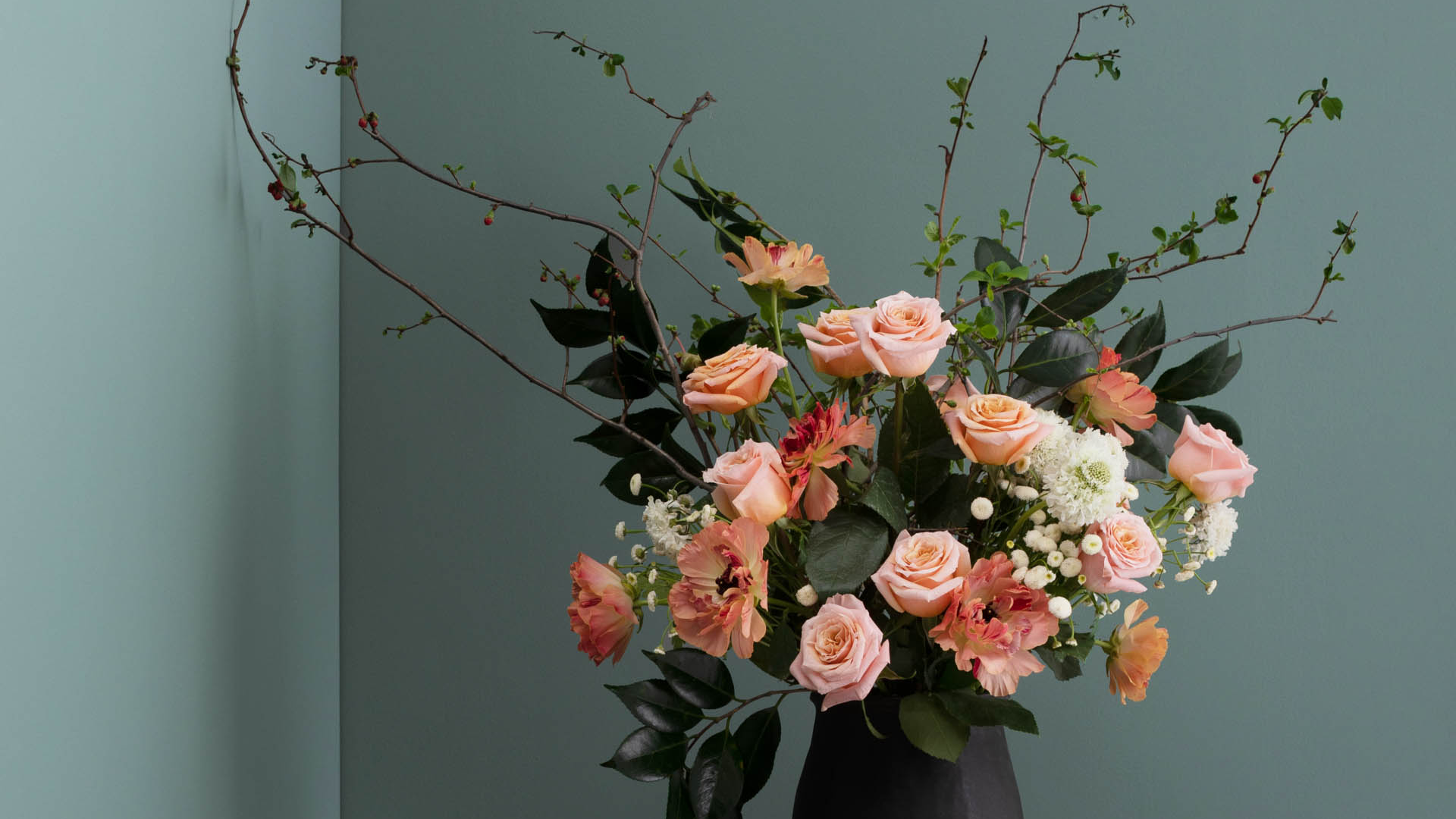
Benjamin Moore’s Templeton Gray (HC-161) is a soft, warm gray with subtle taupe undertones.
It’s not a stark, cold gray but a deeper, richer shade that provides warmth and depth. I often think of it as the perfect balance between beige and gray, a perfect neutral for creating inviting, sophisticated spaces.
I’ve noticed that Templeton Gray changes depending on the time of day and the type of lighting in the room.
In the morning, when the sunlight pours in, the color takes on a slightly more neutral feel.
But in the evening, under artificial lighting, it leans toward a warmer, cozier gray with hints of brown and taupe.
With an LRV (Light Reflectance Value) of 23.9, Templeton Gray falls into the mid-range.
This means it reflects enough light to keep a room feeling open but still brings a sense of depth, which is ideal for creating a calm, grounded atmosphere.
What makes Templeton Gray stand out is its versatility. It pairs well with various lighting conditions and decor styles, making it an adaptable choice for many spaces.
What Rooms Work Best with Templeton Gray?
Templeton Gray is perfect for creating sophisticated and serene environments in various rooms. Here’s how I’ve seen it transform different spaces:
Living Rooms
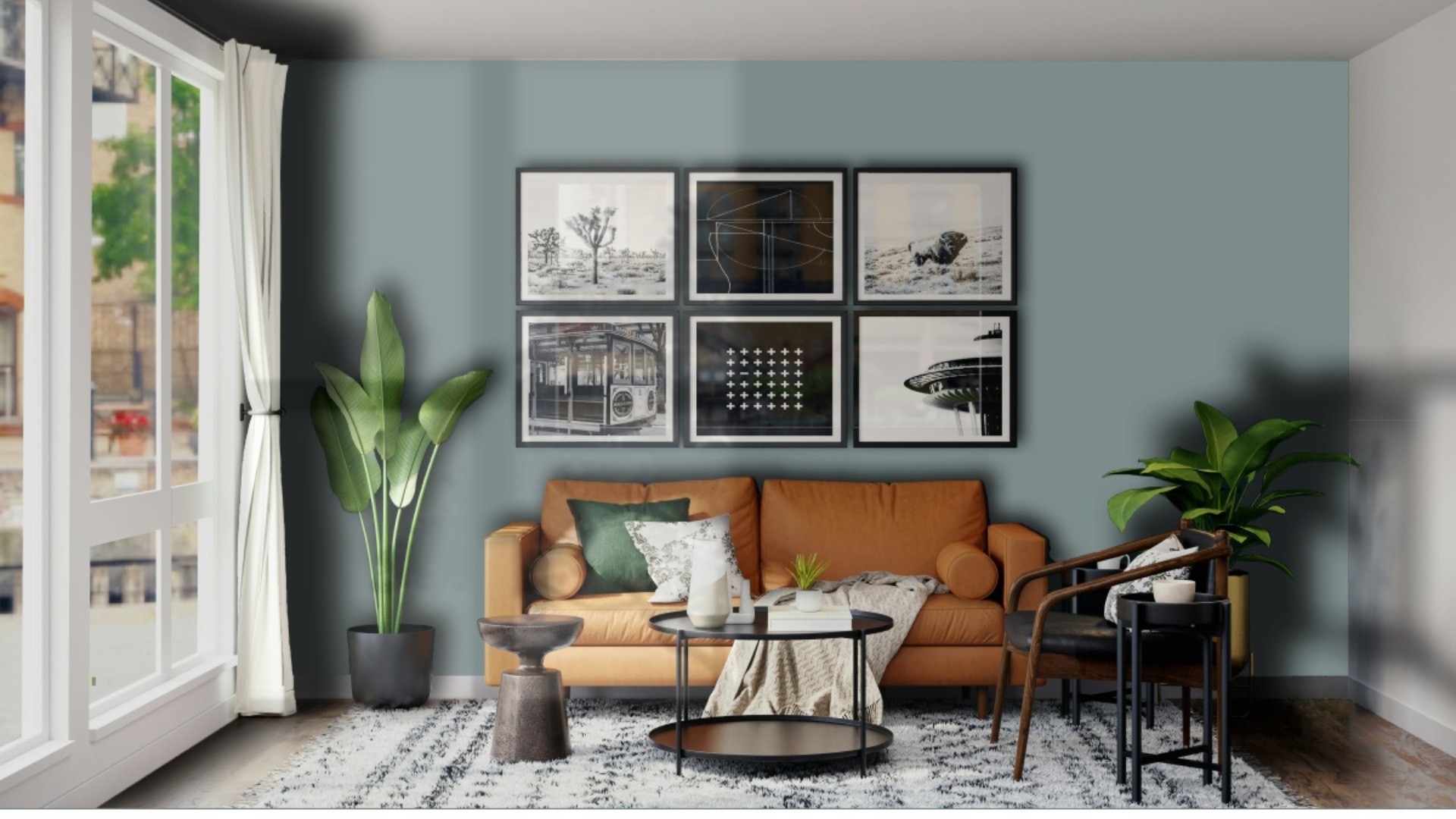
Templeton Gray can make your living room feel both cozy and upscale. It offers a neutral backdrop that complements both bold and subtle furniture choices.
In my living room, Templeton Gray walls pair beautifully with a navy sofa and a natural wood coffee table, creating an elegant yet warm atmosphere.
The color helps to make larger living rooms feel inviting without being overpowering, and in smaller spaces, it creates a feeling of openness while adding depth.
Dining Rooms
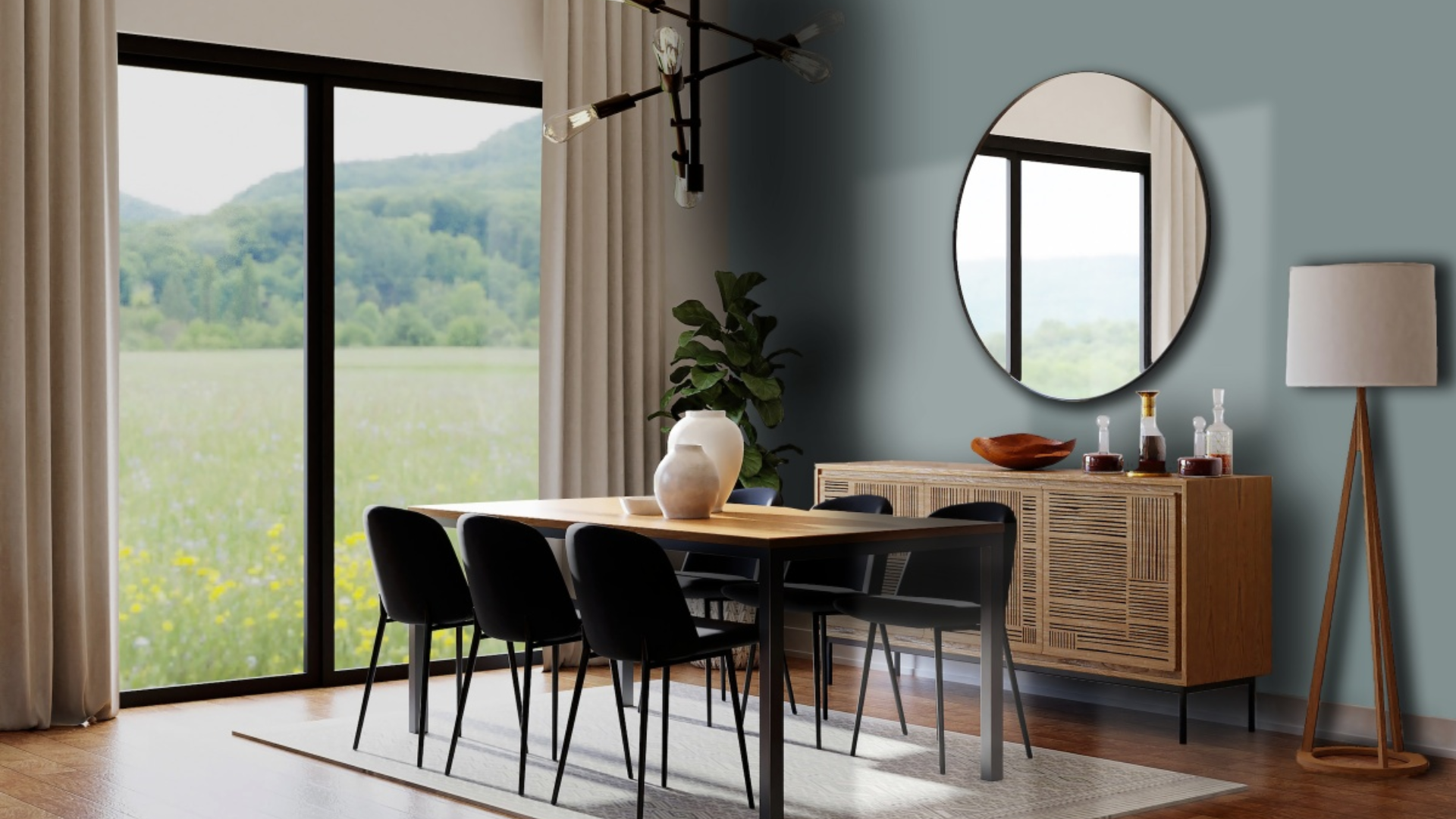
This refined shade of gray is perfect for dining rooms. It sets a calm, sophisticated tone for meals, especially when paired with rich, dark furniture or light-colored decor.
My dining room feels cozy yet classy with Templeton Gray on the walls, providing the ideal backdrop for candlelit dinners.
In the evening light, the color’s taupe undertones really come to life, making it an excellent choice for intimate gatherings or family meals.
Bedrooms
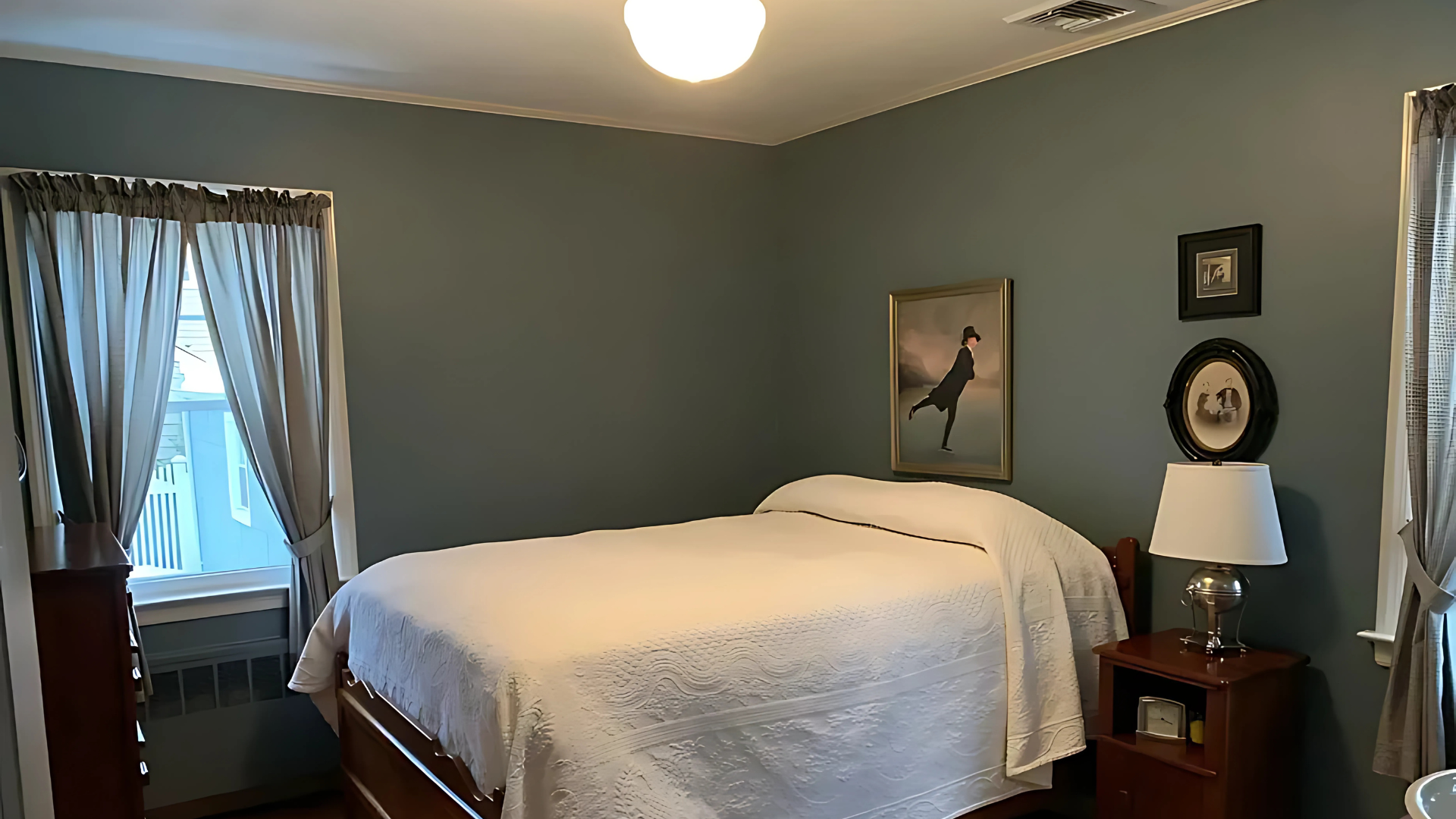
Templeton Gray is a great choice for bedrooms because it creates a calm and restful environment. The warmth of the color adds comfort, and it pairs well with almost any bedding or decor.
I’ve seen it look beautiful with crisp white linens and soft taupe accents, making the room feel like a peaceful retreat.
The color also helps rooms with low natural light feel more open, which is great for creating a relaxing atmosphere.
If you want a bedroom that feels both chic and cozy, Templeton Gray is an excellent option.
Powder Rooms
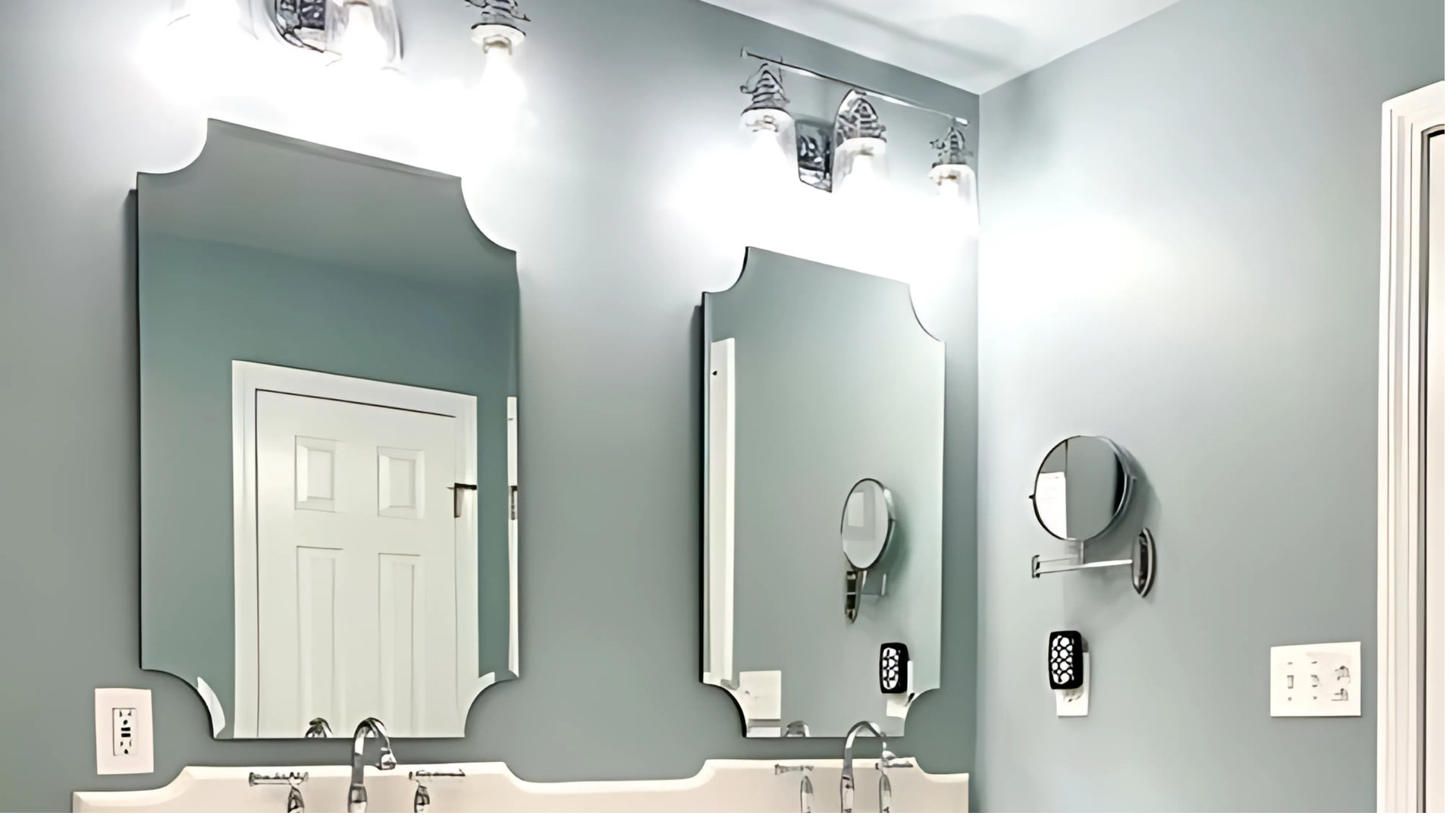
Templeton Gray is also an excellent choice for powder rooms, where it can add elegance without overwhelming the space.
The subtle warmth of the color makes it perfect for smaller areas. In a powder room, Templeton Gray creates a welcoming atmosphere that’s perfect for guests.
The color pairs well with metallics or bold fixtures, think gold or silver hardware. It’s also an excellent choice for powder rooms with limited natural light, as it adds depth and coziness.
What Colors Go Well with Templeton Gray?
Templeton Gray is a versatile neutral that pairs beautifully with a variety of colors. Here are my top matches:
- Crisp whites: These create a beautiful contrast, making the gray pop without being too bold.
- Soft blues: These add a touch of calm and serenity without competing with the gray.
- Warm wood tones: Complements the warmth of the gray and helps balance the coolness of the color.
- Muted greens: For a natural, earthy vibe that works well in living rooms or bedrooms.
- Rich metallics: Gold and silver accents really stand out against this soft gray, adding a touch of glamour.
For my living room, I paired Templeton Gray walls with a white sofa and wooden accent tables, creating a timeless and welcoming space.
What Style Works Well with This Color?
Templeton Gray is incredibly adaptable, making it a great choice for a range of design styles:
- Traditional: In traditional homes, this color highlights classic furniture and architectural features, adding warmth and depth to the space.
- Modern: In modern interiors, it serves as a neutral base that helps bolder accent colors or minimalist decor shine.
- Transitional: Templeton Gray works beautifully in transitional spaces, bridging the gap between traditional and contemporary design elements.
- Rustic: Pairing it with natural stone or wooden accents brings a touch of rustic charm to the space.
For my home, which blends modern and vintage elements, Templeton Gray works well as a backdrop for old and new furniture, offering a sophisticated canvas for mixed styles.
Is It a Warm or Cool Color?

Templeton Gray is a warm color, with its subtle taupe undertones giving it an inviting, cozy feel. It doesn’t come across as cold or stark, which makes it ideal for creating a space that feels both calm and grounded.
While it’s not overly warm, it’s definitely more of a warm gray than a cool one. This makes it a perfect choice for creating serene spaces that still feel welcoming and comfortable.
| Characteristic | Templeton Gray (HC-161) | What This Means for Your Space |
|---|---|---|
| Temperature | Warm | Creates a cozy, grounded atmosphere |
| Undertones | Taupe (subtle brown-gray) | Adds warmth and depth to spaces |
| Light Reflectance Value (LRV) | 34 | Mid-range reflectance that keeps the space open yet rich |
| Seasonal Feel | Year-round | Works well in both summer and winter settings |
| North vs. South Rooms | Adaptable | Appears softer in north-facing rooms, warmer and richer in south-facing rooms |
How to Test This Color in Your Space?
Before you commit to Templeton Gray, here’s how I suggest you test it:
- Buy a sample: Pick up a small sample of Benjamin Moore Templeton Gray.
- Paint a board: Use a large piece of poster board (about 2×2 feet).
- Move it around: Try the sample in different areas of the room and see how it changes in natural light versus artificial lighting.
- Live with it for 3 days: Colors can look different at first, so give it some time to adjust before making a final decision.
When I first tested Templeton Gray, I was amazed at how different it looked in the morning sunlight compared to the evening. It’s important to see how it interacts with your specific lighting.
What Paint Finish Should You Choose?
The paint finish can influence how Templeton Gray looks on your walls. Here’s what I recommend:
- Flat: Great for ceilings or low-traffic areas where you don’t need to worry about cleaning.
- Matte: My favorite for most walls. It provides a smooth, non-reflective finish that enhances the warm richness of the color.
- Eggshell: Perfect for areas like kitchens and bathrooms where you need something more durable and easy to clean.
- Satin: Adds a bit of sheen and is great for high-traffic areas but might make the color look a bit lighter.
- Semi-gloss: Too shiny for walls, but great for doors and trim.
In my bedroom, I used a matte finish, which kept the space feeling calm and sophisticated. Eggshell was a great choice for durability in high-traffic areas like the kitchen.
Real Home Ideas Using Templeton Gray
Some real home ideas I’ve tried with Templeton Gray are:
- Accent wall: Use it behind a sofa or bed to create a dramatic focal point.
- Built-ins and bookshelves: Painted in Templeton Gray, these pieces add sophistication and depth to your room.
- Furniture: A dresser or accent chair painted in Templeton Gray makes a bold statement.
- Kitchen island: Combine it with white cabinetry for a custom, timeless look.
One of my friends painted all her built-in shelves in Templeton Gray with white walls, and the effect is stunning.
The color makes the books and decor pop, giving the entire room a more custom, high-end feel.
Mistakes to Avoid
I’ve made a few mistakes with Templeton Gray along the way. Here’s what I’ve learned:
- Using the wrong lighting: Warm lighting can make Templeton Gray appear too yellow or muddy. For the best effect, stick with cooler bulbs (3500K -5000 K).
- Not getting enough paint: You may need more than two coats for full coverage, especially if you’re covering lighter colors. Always buy extra.
- Not testing before committing: This color looks different in various lighting conditions. Always test a large sample before diving in.
- Pairing with only cool colors: To avoid a one-dimensional look, mix in warm tones or metallics for a more balanced space.
Is Templeton Gray Right for Your Home?
If you want a warm and inviting gray, Templeton Gray could be the perfect choice. It’s rich without being overpowering, and it works in many different spaces and lighting conditions.
Whether in a living room, bedroom, or dining room, it will create a calm, stylish backdrop for your furniture and decor.
After using it in multiple rooms for several years, I can say it’s a color that stands the test of time. It brings depth and sophistication to any space without ever feeling dated or dull.
Frequently Asked Questions
Will Templeton Gray Make a Room Feel Smaller?
Not necessarily! With good lighting, mirrors, and lighter trim, Templeton Gray can actually make a room feel more expansive while still maintaining warmth.
How Many Coats of Templeton Gray Will I Need?
At least two, possibly three coats, depending on the surface and the color you’re covering.
Does Templeton Gray Work in Rooms with Limited Natural Light?
Yes! The warmth in the color helps a room feel more welcoming, even in spaces with limited natural light.

